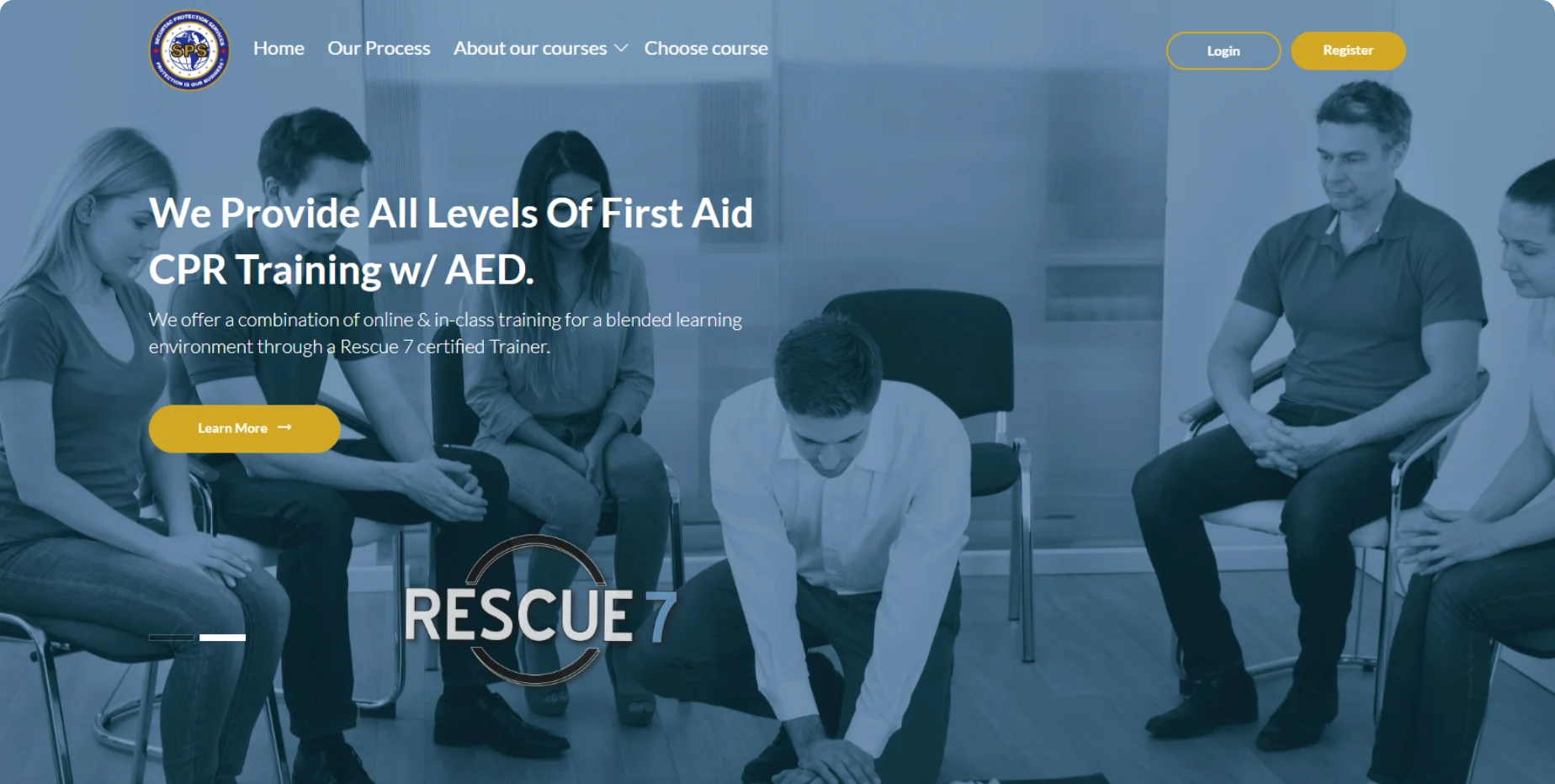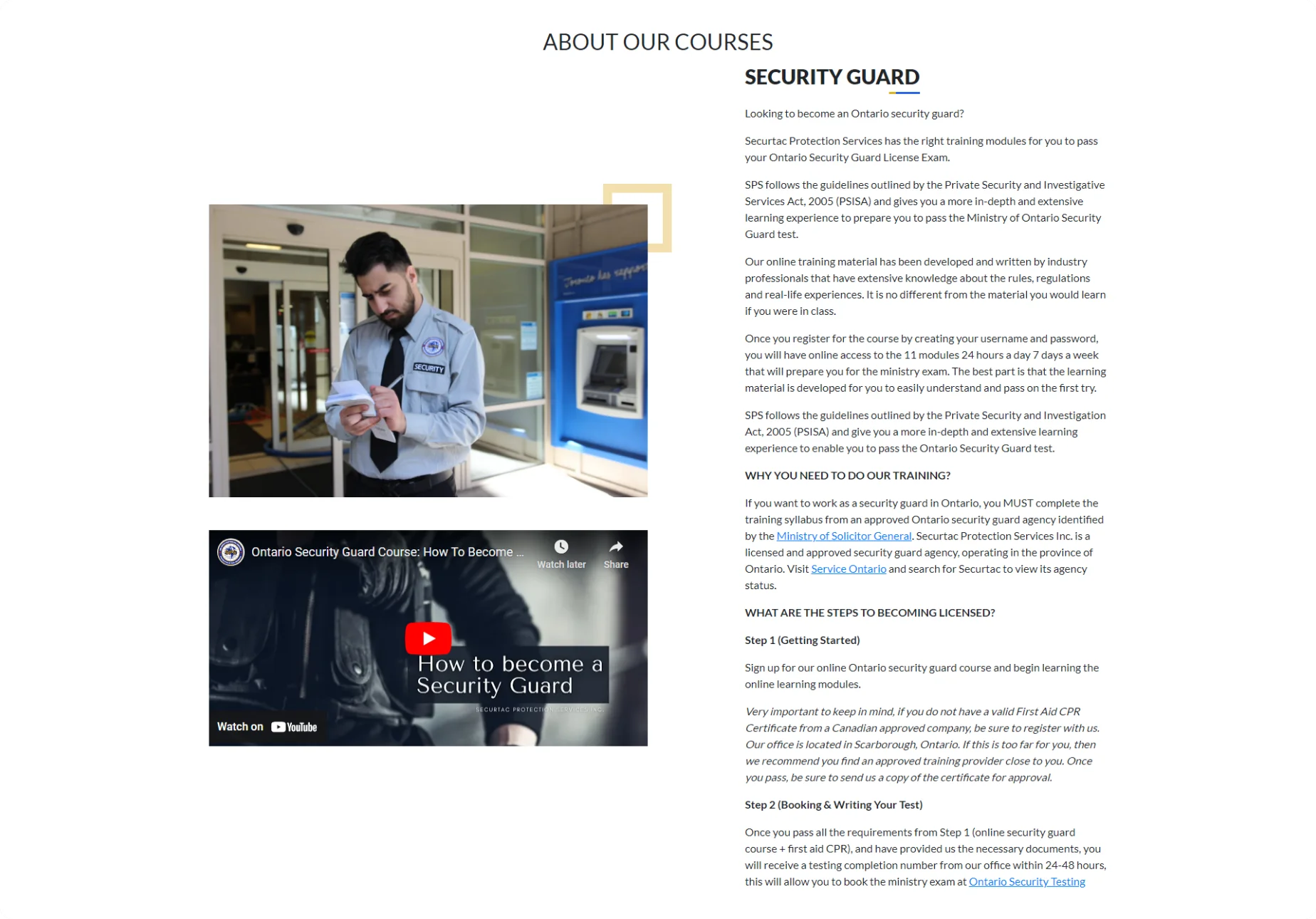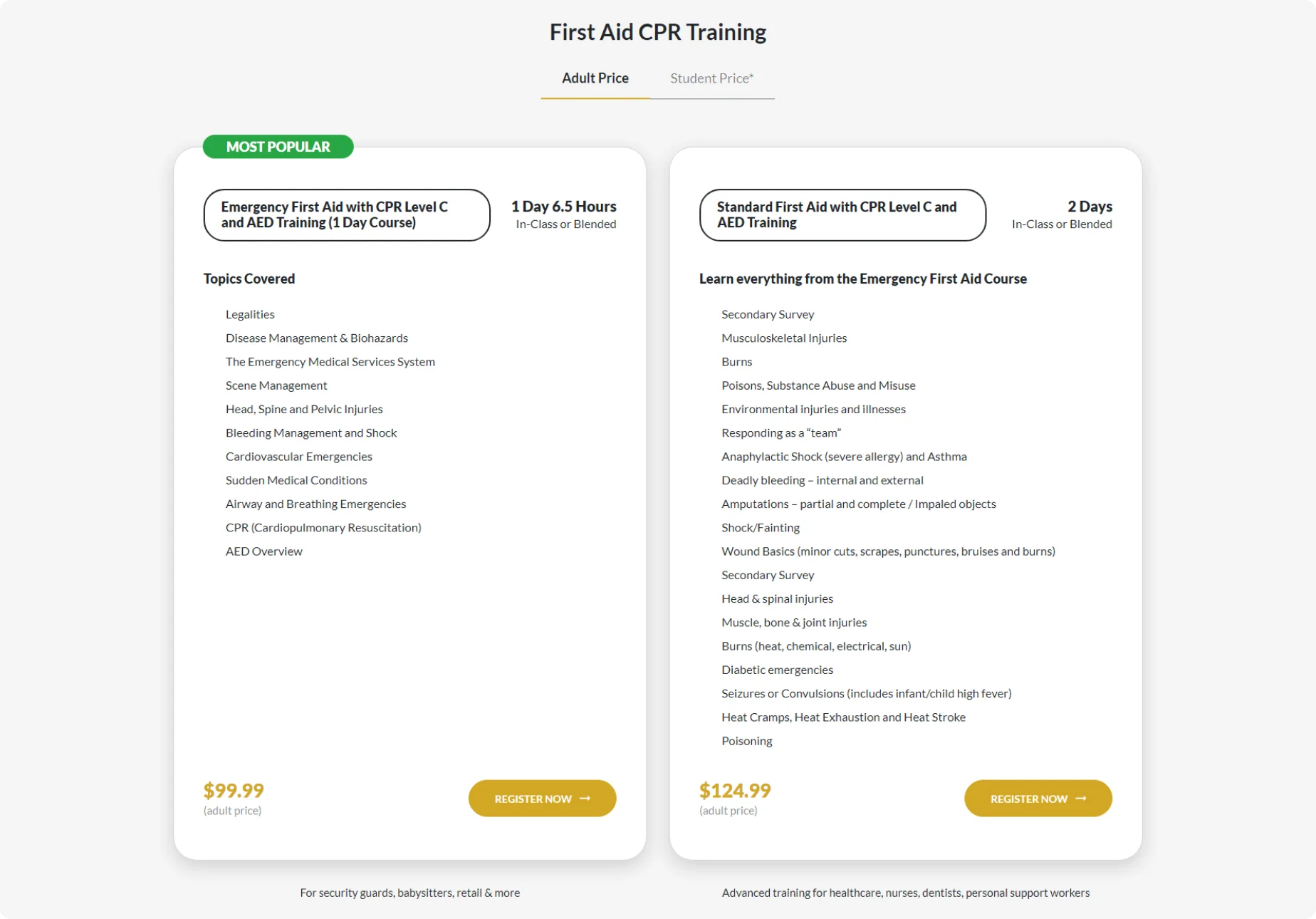
i
Traditional security training programs often lack the accessibility and scalability needed to meet global demands. With the security landscape constantly evolving, there's a pressing need for training platforms that can rapidly adapt and scale to accommodate learners from various regions.
Across different regions, the quality and consistency of security training vary significantly. This inconsistency can lead to disparities in the skill levels of security personnel, affecting the overall quality of security services provided.
Security regulations and standards differ widely across countries and regions. A major challenge is creating a training program that not only meets global standards but also adapts to local regulations.
The integration of modern technology into security training is lagging, which prevents the adoption of innovative training methods such as virtual reality simulations, interactive eLearning, and real-time feedback mechanisms.
Many organizations and individuals face financial and resource constraints that limit their access to comprehensive security training. High-quality training programs are often expensive and resource-intensive to deliver, making them inaccessible to a wide audience.
Security training needs to be culturally sensitive and available in multiple languages to be effective worldwide. Overcoming language and cultural barriers is essential to provide inclusive and accessible training.
The security industry must continuously evolve to address new and emerging threats. Traditional training programs often struggle to update their curriculum in real-time, leaving security personnel unprepared for modern challenges.
As training programs move online, there's a challenge in ensuring that all participants have the necessary digital literacy skills. Additionally, keeping learners engaged in a virtual environment is significantly different from in-person training methods.
For security training to be effective, it must be recognized and accredited by relevant authorities. Establishing such recognition on a global scale is challenging but crucial for the legitimacy and effectiveness of the training.
With the increasing use of online platforms for security training, safeguarding the data privacy and security of learners is paramount. Ensuring robust cybersecurity measures are in place is a significant challenge for digital training platforms.
Implementing SCORM (Sharable Content Object Reference Model) compliance ensures that Securtac's eLearning content is interoperable across various systems, facilitating a standardized training experience that can be widely recognized and adopted.
A robust CMS allows Securtac to dynamically manage and update training programs, materials, and exams. This flexibility is crucial for incorporating the latest security practices and regulations into the curriculum.
Utilizing algorithms to adapt learning paths based on the learner's progress and performance. This personalized approach enhances learning outcomes by focusing on areas where the learner needs improvement.
To address language and cultural barriers, the platform includes multi-language support, making the training accessible to a global audience and ensuring inclusivity.
Incorporating interactive tools such as virtual reality (VR) simulations, augmented reality (AR) experiences, and gamified learning modules to engage learners and provide hands-on experience in a virtual environment.
Leveraging data analytics to provide comprehensive reports on learner progress, engagement, and outcomes. This feature enables both learners and administrators to monitor progress and identify areas for improvement.
Integrating secure and reliable payment gateways like Stripe to facilitate easy and safe transactions for enrolling in courses, ensuring accessibility and convenience for users worldwide.
Ensuring the platform is fully responsive and accessible on various devices, including smartphones and tablets. Implementing PWA technology can offer a near-native app experience without the need for downloading a mobile app.
Utilizing APIs to integrate with external systems and services, such as certification authorities, job boards, and educational resources, enhancing the platform's functionality and scalability.
Implementing advanced security protocols to protect user data and privacy, including SSL encryption, secure login mechanisms, and compliance with international data protection regulations.

Implementing SCORM compliance ensures that Securtac's training content is compatible with various learning management systems (LMS), allowing for standardized content delivery and tracking across platforms. This feature is crucial for maintaining high-quality training standards and enabling seamless content updates and interoperability.
Leveraging data analytics and machine learning algorithms, the platform offers personalized learning experiences by adapting the content based on the learner's performance and preferences. This approach enhances engagement and effectiveness by focusing on the learner's specific needs and areas for improvement.
Incorporating VR and AR for simulations and gamified learning modules transforms traditional security training into an interactive and engaging experience. These technologies provide hands-on practice in a controlled, virtual environment, preparing learners for real-world security challenges.
Integrating secure payment gateways like Stripe ensures a smooth and safe transaction process for users enrolling in courses. This functionality supports global access by offering various payment options and currencies, removing financial transaction barriers.
Utilizing APIs for integration with external systems, such as job boards, certification authorities, and additional educational resources, extends the platform's functionality. This scalability is essential for providing a comprehensive learning ecosystem that supports the learner's journey from training to certification and employment.
A dynamic CMS enables Securtac to swiftly update and manage training materials, courses, and exams. This system supports real-time updates to ensure that the curriculum reflects the latest security practices, regulations, and technologies, addressing the need for up-to-date and relevant content.
To cater to a global audience, the platform includes multi-language support, allowing users to access the training in their preferred language. This feature, combined with cultural adaptation of the content, ensures inclusivity and accessibility, breaking down language and cultural barriers in security training.
The platform's advanced analytics capabilities offer detailed insights into learner progress, engagement levels, and areas of difficulty. This data-driven approach enables both learners and instructors to monitor performance and tailor the learning journey for optimal outcomes.
By designing the platform to be fully responsive and adopting PWA technology, Securtac ensures that users can access the training on any device, offering an app-like experience without the need for a traditional app download. This approach enhances accessibility and convenience for learners worldwide.
Implementing state-of-the-art security protocols to protect user data and ensure privacy is paramount. The platform adheres to international data protection regulations, employing encryption, secure authentication methods, and regular security audits to safeguard user information.

At the heart of Securtac's platform is a modular architecture design, enabling flexibility, scalability, and ease of maintenance. This approach allows for the seamless integration of new features, updates to existing modules, and customization according to specific training needs or regulatory changes. Each module, from user management to content delivery and analytics, operates independently but is tightly integrated to ensure a cohesive user experience.
The backend of Securtac's platform is built on a microservices architecture, where each service is responsible for a specific functionality, such as user authentication, payment processing, or content management. This setup facilitates scalability, as services can be independently scaled based on demand. It also enhances the platform's resilience, as the failure of one service does not impact the overall system.
For the frontend, reactive frameworks like React.js are employed to create a dynamic and responsive user interface. These frameworks enable the development of a single-page application (SPA) that provides a seamless and interactive user experience, mimicking the feel of a native app within a web browser.
The platform utilizes a combination of relational (MySQL) and NoSQL (MongoDB) databases to manage structured and unstructured data efficiently. MySQL handles structured data such as user profiles and course records, while MongoDB stores unstructured data like user interactions, logs, and analytics. This hybrid approach ensures optimal performance, flexibility, and scalability.
A core feature of the platform is its integration with a Learning Management System (LMS), such as Moodle or Canvas, which provides a comprehensive suite of tools for course management, grading, and collaboration. This integration allows for the utilization of SCORM-compliant content, quizzes, and interactive modules, enhancing the learning experience.
Security is paramount in the platform's architecture, incorporating SSL encryption, secure authentication mechanisms (OAuth 2.0), and compliance with data protection regulations (GDPR, CCPA). Regular security audits and adherence to best practices ensure the protection of user data and privacy.
The platform is hosted on a cloud infrastructure, leveraging services from providers like AWS or Google Cloud Platform. This cloud-based approach provides high availability, disaster recovery, and auto-scaling capabilities, ensuring that the platform remains operational and responsive under varying load conditions.
An advanced analytics and reporting engine is integrated into the platform, utilizing data visualization tools and machine learning algorithms to generate insights into user engagement, course effectiveness, and learning outcomes. This engine supports data-driven decision-making and continuous improvement of the training content.
An API-first approach is adopted to facilitate integration with external systems, such as payment gateways (Stripe), third-party educational content providers, and certification authorities. This approach ensures that the platform can easily extend its capabilities and remain adaptable to evolving training needs.
To enhance accessibility and offline functionality, the platform is developed as a Progressive Web Application (PWA). This technology allows users to access the platform on any device with a web browser, offering an app-like experience, including offline access to course materials.


Utilizes a hybrid database system combining MySQL for structured data, such as user profiles and course records, with MongoDB for unstructured data like user interactions and analytics. This approach ensures optimal performance and flexibility.
The backend is structured around microservices, each responsible for a specific aspect of the platform, such as user management, content delivery, or payment processing. This design enhances scalability and facilitates easier updates and maintenance.
An API-first approach ensures seamless integration with external services and third-party applications, extending the platform's functionality. This includes payment gateways, educational tools, and HR systems for corporate clients.
Implements OAuth 2.0 for secure authentication and authorization, protecting user data and ensuring that access is appropriately managed across the platform. This system is crucial for maintaining privacy and security standards.
Leverages cloud services like AWS for hosting and storage, providing high availability, scalability, and secure data storage solutions. Cloud infrastructure supports auto-scaling to handle varying loads efficiently.
Data is encrypted both in transit and at rest, adhering to international security standards and regulations such as GDPR. Regular security audits and compliance checks ensure the platform meets global data protection requirements.
Incorporates real-time analytics and data processing capabilities to offer immediate insights into user behavior, course engagement, and performance metrics. This functionality enables dynamic content adaptation and personalized learning experiences.
A CDN is utilized to distribute content globally, reducing latency and ensuring that users can access course materials quickly, regardless of their geographic location. This network is essential for providing a seamless user experience worldwide.
Implements robust backup and disaster recovery strategies to safeguard data against loss or corruption. Regular backups and failover mechanisms ensure the platform's resilience and data integrity.
Continuous monitoring tools track the platform's performance, identifying and addressing potential bottlenecks or issues proactively. Optimization efforts ensure that the platform remains fast and responsive under all conditions.

React.js: For building a dynamic and responsive user interface.
HTML5, CSS3, and JavaScript: Standard technologies for web development, ensuring compatibility and performance across browsers.
Bootstrap: For responsive design frameworks that accelerate UI development.
Laravel PHP Framework: For server-side logic and application structure, offering robust features for web app development.
MySQL: A relational database management system for structured data storage.
MongoDB: A NoSQL database for storing unstructured data like logs and userinteractions.
AWS (Amazon Web Services): For hosting, storage, and cloud computing services.
Cloudflare: For CDN (Content Delivery Network) services, enhancing global content delivery speed and security.
Stripe API: For secure online payment processing, supporting various payment methods and currencies.
PayPal API: As an alternative or additional payment service provider.
SCORM Cloud API: For integrating SCORM-compliant eLearning content and tracking learner progress.
Vimeo API: For embedding video content within courses.
SendGrid: For email services, enabling platform notifications, and marketing communications.
Twilio API: For SMS notifications and potentially voice services for user engagement.
Google Analytics API: For tracking and analyzing user interactions on the platform.
Mixpanel: For advanced analytics and user behavior tracking.
Auth0 Authentication: For secure user authentication and authorization services.
Let's Encrypt: For free, automated SSL certificates, ensuring encrypted data transfer.
Google Maps API: For location-based services, if relevant to the platform's features.
Zapier: For automating workflows and integrating with various third-party apps and services without direct API integrations.
Your unique concepts will be crafted into a remarkable end result by our team.